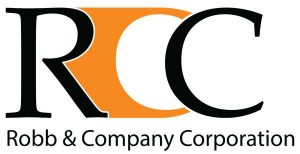
I. Introduction
In today’s fast-paced and competitive business landscape, simply developing a product or service is not enough. The key to building a successful business lies in achieving what is known as “product market fit.” Coined by legendary investor Marc Andreessen, product-market fit has become a mantra for entrepreneurs and startups looking to create something truly valuable and sustainable.
But what exactly is product market fit? Why does it matter so much? And how can businesses go about achieving it? In this article, we will delve into the concept of product market fit, explore its definition and importance, discuss the signs that indicate you have achieved it, and provide valuable insights into how businesses can measure and achieve this elusive state.
As a business owner or entrepreneur, understanding and achieving product-market fit is crucial to the success and growth of your venture. It is the point where your product or service meets the needs and demands of the market in a way that generates significant customer traction and satisfaction. It is the sweet spot where your offering resonates with your target audience, leading to increased adoption, customer loyalty, and ultimately, sustainable revenue growth.
The journey towards product market fit is not an easy one. It requires a deep understanding of your target market, continuous iteration and experimentation, and a relentless focus on collecting and analyzing user feedback. It is a process that involves trial and error, learning from failures, and making necessary adjustments to align your product or service with the market’s needs and preferences.
In the following sections, we will explore the definition and importance of product market fit, identify the signs that indicate you have achieved it, and provide practical strategies for measuring and achieving this coveted state. By the end of this article, you will have a clear understanding of what product market fit entails and how you can apply it to your own business to increase your chances of success.
So let’s dive in and explore the fascinating world of product market fit and discover how it can transform your business into a thriving and sustainable venture.
II. What is Product Market Fit?
Product Market Fit is a term that is often used in the startup and business world, but what does it really mean? In this section, we will delve into the definition and importance of Product Market Fit, as well as explore the signs that indicate when a product has achieved this crucial milestone.

A. Definition and Importance
Product Market Fit can be defined as the alignment between a product and its target market. It is the point at which a product satisfies the needs and demands of its customers in a way that is not easily replicated by competitors. In simpler terms, it is when a product finds its rightful place in the market and resonates with its intended audience.
The importance of Product Market Fit cannot be overstated. Without it, a product may struggle to gain traction, face stiff competition, or fail to generate sustainable revenue. Product Market Fit is the foundation upon which successful businesses are built. It is the catalyst that drives customer adoption, loyalty, and ultimately, business growth.
B. Signs of Product Market Fit
Recognizing when a product has achieved Product Market Fit is not always straightforward, but there are several key signs that indicate its presence. These signs include:
1. Rapid and sustained user growth: When a product experiences consistent and exponential growth in its user base, it is a strong indication of Product Market Fit. This growth is often driven by positive word-of-mouth, indicating that customers find value in the product and are willing to recommend it to others.
2. High customer retention rates: A product that retains a significant percentage of its customers over time demonstrates that it is meeting their needs and delivering on its promises. Loyal customers are more likely to become advocates and contribute to the sustainable success of a product.
3. Increased customer engagement: When customers actively engage with a product, whether through regular usage, frequent interactions, or active participation in community forums, it suggests that the product has become an integral part of their lives. This level of engagement is a strong indicator of Product Market Fit.
C. Why Product Market Fit Matters
Product Market Fit matters for several reasons. Firstly, it is a measure of the product’s viability and potential for long-term success. A product that has achieved Product Market Fit is more likely to attract investors, secure funding, and scale effectively.
Secondly, Product Market Fit allows businesses to focus their efforts and resources on growth instead of constantly iterating their product. With a clear understanding of their target market and the needs they are addressing, businesses can refine their marketing strategies, optimize their sales processes, and scale their operations efficiently.
Lastly, Product Market Fit provides a competitive advantage. When a product aligns perfectly with its target market, it becomes difficult for competitors to replicate its success. This advantage can lead to market dominance and higher customer loyalty, creating barriers for potential entrants.
In the next section, we will explore the strategies and steps involved in achieving Product Market Fit. By understanding the target market, iterating and experimenting, and collecting valuable user feedback, businesses can increase their chances of reaching this critical milestone.
III. Achieving Product Market Fit
A. Understanding Your Target Market
One of the key steps in achieving product market fit is to deeply understand your target market. This involves conducting thorough market research to identify the needs, preferences, and pain points of your potential customers. By gaining a deep understanding of your target market, you can tailor your product or service to meet their specific needs and provide a solution that truly resonates with them.
To understand your target market, start by creating buyer personas. These are fictional representations of your ideal customers, encompassing their demographics, behaviors, motivations, and goals. By creating these personas, you can effectively identify your customers’ pain points and understand what drives their purchasing decisions.
In addition to buyer personas, it is important to conduct market surveys and analyze industry trends. This will help you gain insights into the current market landscape, identify competitors, and understand the unique selling points that will differentiate your product or service.

B. Iterating and Experimenting
Achieving product market fit often requires an iterative and experimental approach. It is rare for a product or service to perfectly fit the market right from the start. Therefore, it is crucial to continuously iterate and experiment with your offering based on user feedback and market insights.
Start by creating a minimum viable product (MVP) that addresses the core needs of your target market. This allows you to quickly launch your product or service and gather user feedback. By listening to your early adopters and incorporating their suggestions and criticisms, you can refine your offering and make it more aligned with your customers’ needs.
Furthermore, experimentation is key to finding the perfect fit. Test different features, pricing models, or marketing strategies to determine what resonates best with your target market. By constantly experimenting and adapting, you increase the chances of achieving product market fit.
C. Collecting and Analyzing User Feedback
User feedback is an invaluable resource in achieving product market fit. Actively collect feedback from your customers through various channels such as surveys, interviews, and user testing. This feedback provides insights into customer satisfaction, pain points, and areas for improvement.
In addition to collecting feedback, it is equally important to analyze and interpret the data you gather. Look for patterns, trends, and common themes in the feedback to identify areas where your product or service could be enhanced or modified. By understanding what your customers truly value and incorporating their feedback into your product development process, you can increase the chances of achieving product market fit.
IV. Measuring Product Market Fit
Measuring product market fit is crucial to determine the success of your product in the market and to identify areas that need improvement. It allows you to gauge how well your product satisfies your target market’s needs and whether it aligns with their preferences and expectations. In this section, we will explore various methods and metrics to measure product market fit effectively.
A. Quantitative Metrics
Measuring product market fit requires the use of quantitative metrics to gauge the success and acceptance of your offering. Some commonly used metrics include customer acquisition cost (CAC), customer lifetime value (CLV), churn rate, and revenue growth rate.
CAC measures the cost of acquiring a new customer, while CLV helps determine the value a customer brings to your business over their lifetime. Churn rate measures the percentage of customers who stop using your product or service, and revenue growth rate measures the increase in revenue over a specific period.
By closely monitoring these metrics and setting benchmarks, you can assess whether your product is gaining traction, attracting and retaining customers, and generating sustainable revenue.
B. Qualitative Indicators
In addition to quantitative metrics, qualitative indicators play a crucial role in measuring product market fit. Qualitative indicators include customer satisfaction, loyalty, and referrals. These indicators provide insights into how well your product or service is meeting the needs and expectations of your customers.
Conducting customer interviews, monitoring online reviews, and analyzing customer support interactions can help you gather qualitative data. By collecting and analyzing this feedback, you can gain a deeper understanding of how your customers perceive and interact with your offering.
C. Customer Feedback and Surveys
Customer feedback plays a vital role in measuring and achieving product market fit. Regularly collecting feedback through surveys allows you to gather valuable insights directly from your customers.
Design surveys that are specific and focused on gathering feedback related to product satisfaction, features, usability, and overall customer experience. By asking targeted questions, you can identify areas for improvement and make informed decisions to enhance your product or service.
Listening to your customers’ feedback, both positive and negative, shows that you value their opinions and are committed to continuously improving your offering. This customer-centric approach is essential in achieving and maintaining product market fit.
V. Conclusion
Achieving product market fit is a critical milestone for any business. By understanding your target market, iterating and experimenting, and collecting and analyzing user feedback, you increase the chances of creating a product or service that meets the needs and desires of your customers. Through a combination of quantitative metrics, qualitative indicators, and customer feedback, you can measure and continuously improve your product market fit, ensuring long-term success in the marketplace.
